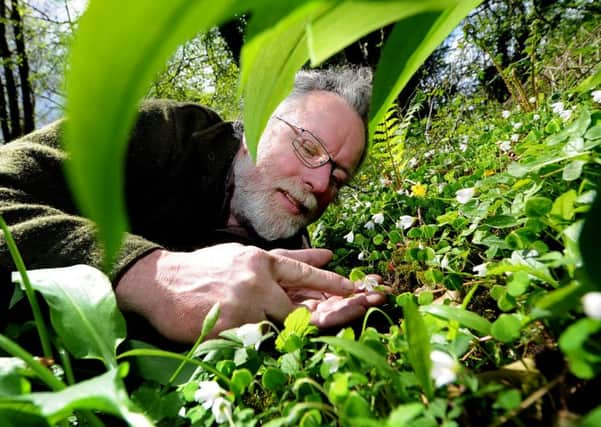Wild trails in Yorkshire to find herb made famous by Elizabeth David


Such adventures are because they will usually search in vain for sorrel among the fruit and vegetables at supermarkets, or at farmers’ markets and greengrocers.
But there it is, wood sorrel growing for free and sometimes abundantly so across Yorkshire and elsewhere. I find it in a couple of favourite woodland haunts in Calderdale and Airedale, and the Yorkshire Dales National Park’s excellent Nature in the Dales website says that it grows at specific locations in Wharfedale, Wensleydale and Crummuckdale.
Advertisement
Hide AdAdvertisement
Hide AdThe arrival of Easter next week triggers my annual forage for wood sorrel, since the leaves are at their best in early spring. It is also associated with this time of year by Christian tradition, since - depending on the weather - the plant’s delicate white purple-veined flowers grow between Easter and Whitsuntide, which is the eighth Sunday after Easter.
It is this flowering period which gave wood sorrel its alternative name of Alleluia, and is responsible for the belief that it is nature’s way of celebrating the resurrection and ascension of Christ.
Of course, some gardeners grow common sorrel leaves (Rumex acetosa) for salads or as a pot herb, but to my tastebuds wood sorrel (Oxalis acetosella) is less astringent and its apple-lemony flavour adds a nice zing to the sweetness of tomatoes in Elizabeth David’s soup.
I often come across layers of them in woodland where there is shade and plenty of moisture, as well as along north-facing hedgerows.
Advertisement
Hide AdAdvertisement
Hide AdWhereas common sorrel has long arrow-shaped leaves, wood sorrel has the appearance of large clover except that its trefoil leaves are heart-shaped rather than oval.
I like this description of wood sorrel from 1860, published in The Garland of the Year by Charlotte Clifford: “A more beautiful floral emblem of praise could not be selected than this exquisitely sensitive little plant.
“Coming forth at the first summons of spring it continues to adorn the woods with its bright triple leaves, until the fading foliage of autumn consigns it to a living grave.”
I have heard of walkers picking them to eat as a “trail munch” since they apparently act as a thirst-quencher. The sharp taste comes from the presence of oxalic acid, which is a mild toxin. Spinach and broccoli have it too, and the advice is that you should not consume too much of it over a short period because it inhibits the uptake of calcium in the body.
Advertisement
Hide AdAdvertisement
Hide AdIn some cases, ingesting large amounts has been linked to kidney stones.
If you go foraging for wood sorrel, I would recommended packing a pair of scissors and be sure to take only to the tops of the plant so that the roots stay in the ground.
I usually remove the stems of the leaves, which can sometimes be stringy when cooked.